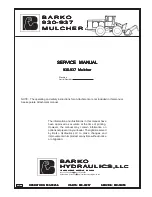
9
3. INSULATION RESISTANCE MEASUREMENTS
a)
Turn the function switch from the
“
OFF
”
position to the left
(
4000
MΩ
/1000V---4000/
MΩ
500V---4000
MΩ
/250V---1000
MΩ
/125V
)
,and chose one of the voltage-block( there are 4 ranges
namely, 4
MΩ
40
MΩ
400
MΩ
4000
MΩ
, can be switched
automatically for every voltage-block.)
b)
Connect two testing lines to the tested
;
c)
Push down and hold the
“
TEST
”
button /or press the
“
LOCK
”
keystoke first and then the
“
TEST
”
button, if the tested is
electriferous and its voltage ( AC/DC) is over 30V, it will refuse
work and no high-voltage testing occurs, simultaneity, it shows
“
>30V
”
on the LCD, the symbol
“
”
flashes, and the buzzer
warns frequently. if the tested is diselectriferous or its voltage is
lower than 30V, it will enter into the formal testing process and
brings the high-voltage. on the primary display, the insulation
resistance in M
Ω
is indicated in-phase with analog bar; on the
secondary display, the tested insulation voltage in V (DC) is
indicated, the symbol
“
”
flashes and the buzzer warns
frequently
d)
Being free from the
“
TEST
”
button or pushing down the
“
TEST
”
button in the
“
LOCK
“
status can exit from the
“
LOCK
”
status and
shutoff the high-voltage
,
synchronously, the resistance values is
indicated in the primary display will be held, and the secondary
display still be in the status of monitoring the insulation voltage for
the tested.
e)
Subsequently, discharge the balance insulation voltage of the
tested through the inner switch of the meter.
Turning the function switch can exit automatically from testing
status during the process
。
































